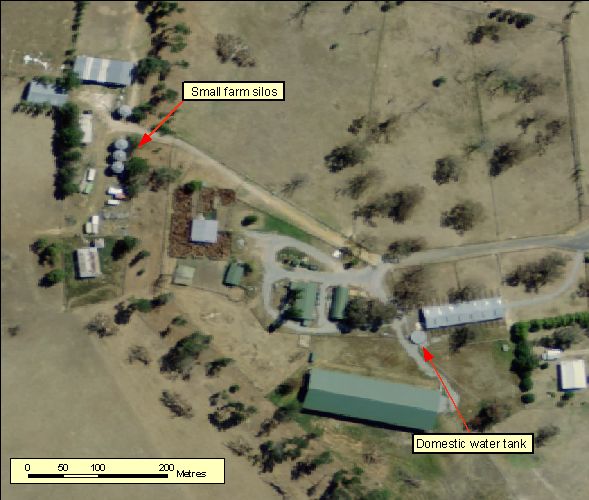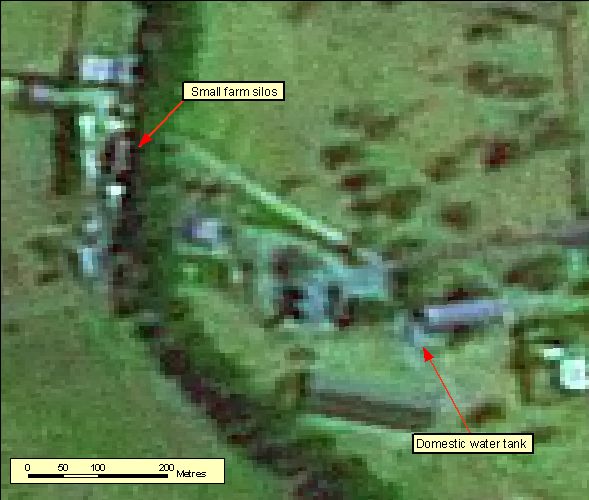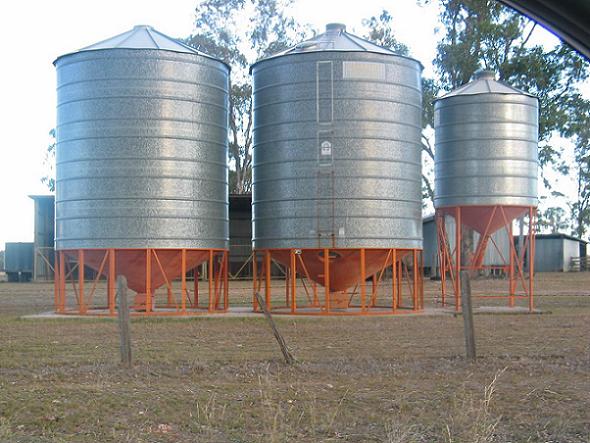2.4.8 Silos
2.4.8.1 Example 1
| Location of Example: | 148°57'52" East, 34°52'35" South |
| Distinctive Characteristics: |
|
| Regional Considerations: |
|
| Figure: 2.4.8.1 Representation of a Silo and Water Tanks in a small farm situation. | |



Topic contact: mapfeedback@ga.gov.au Last updated: January 20, 2012
